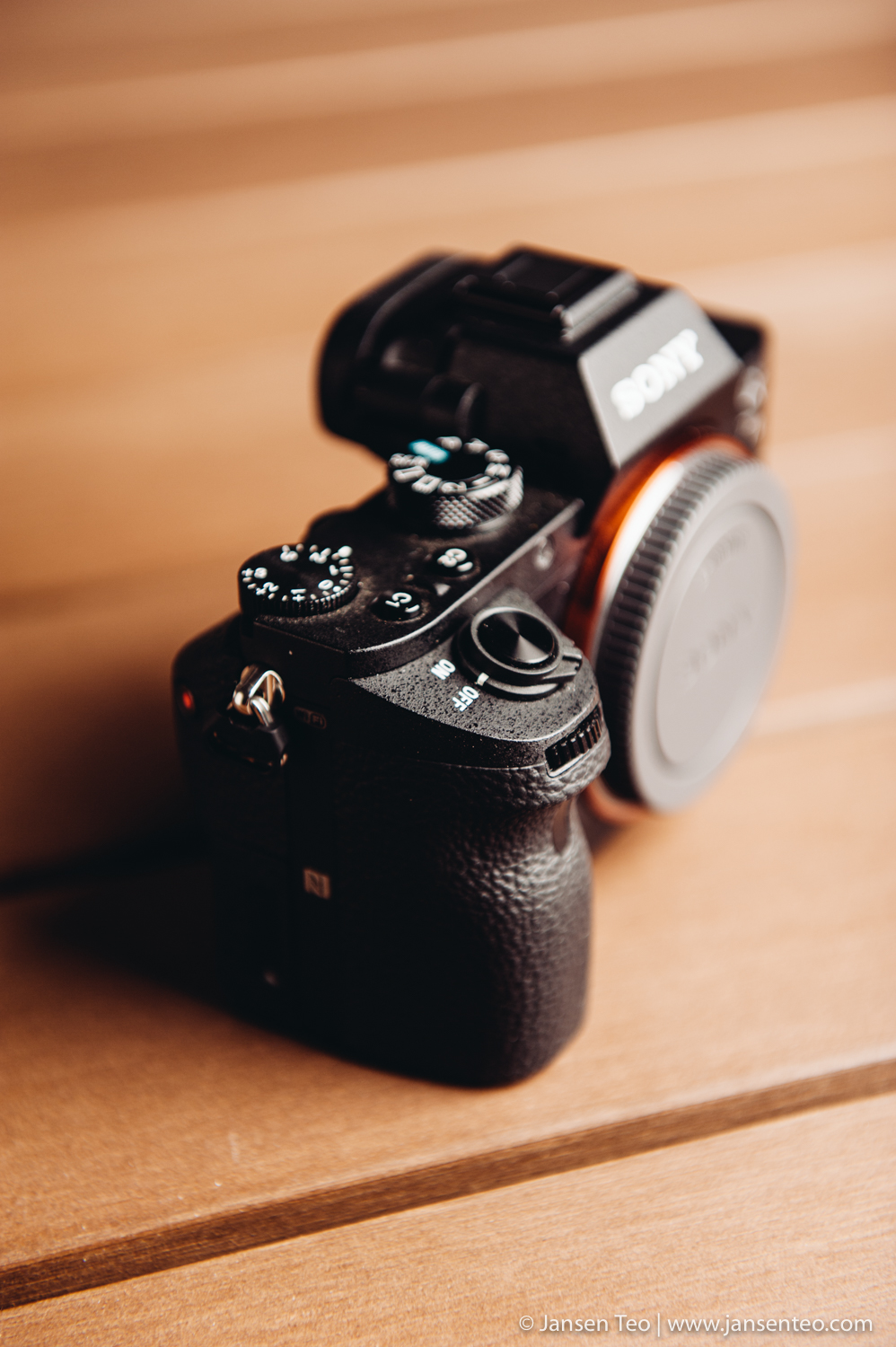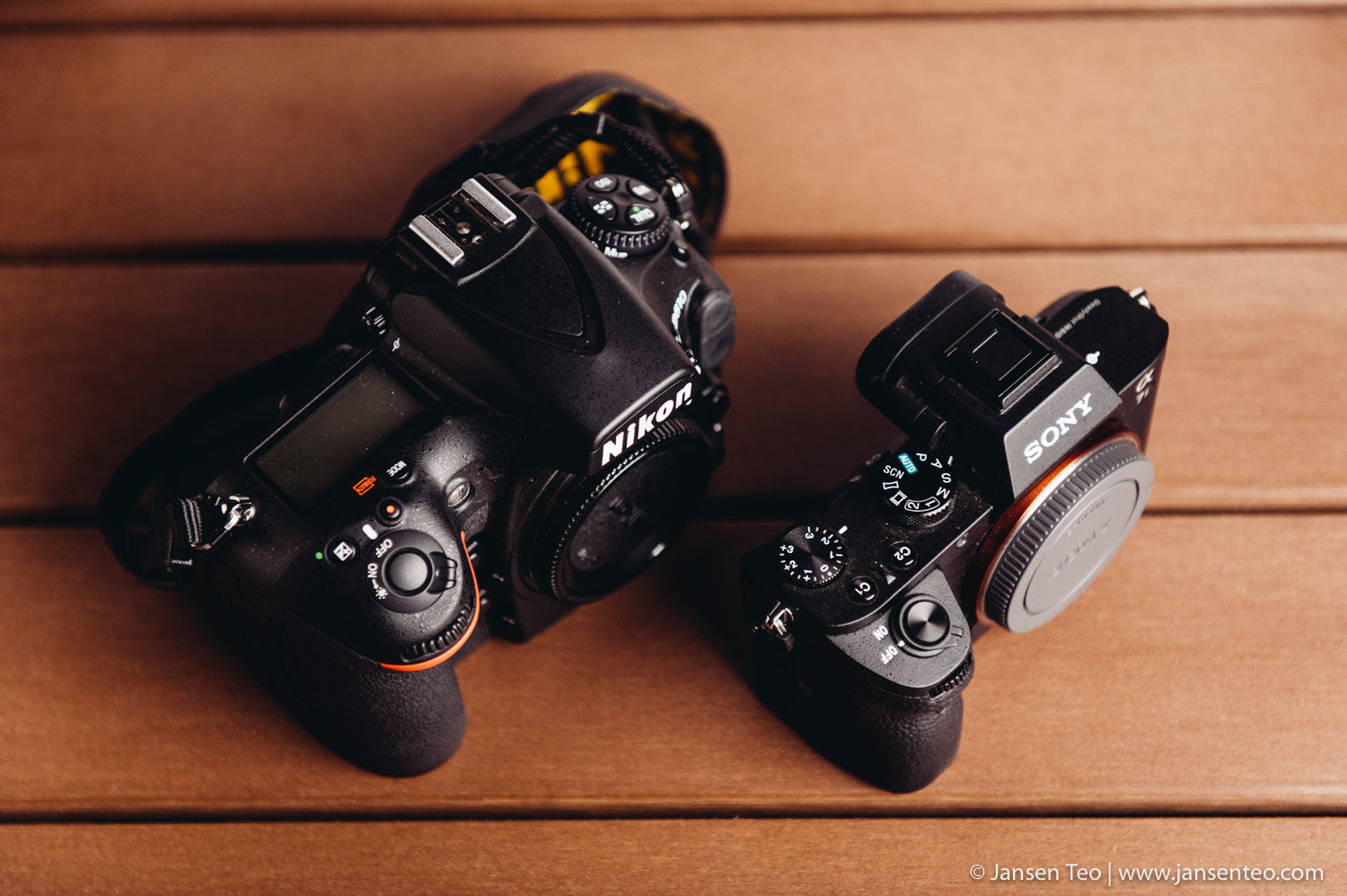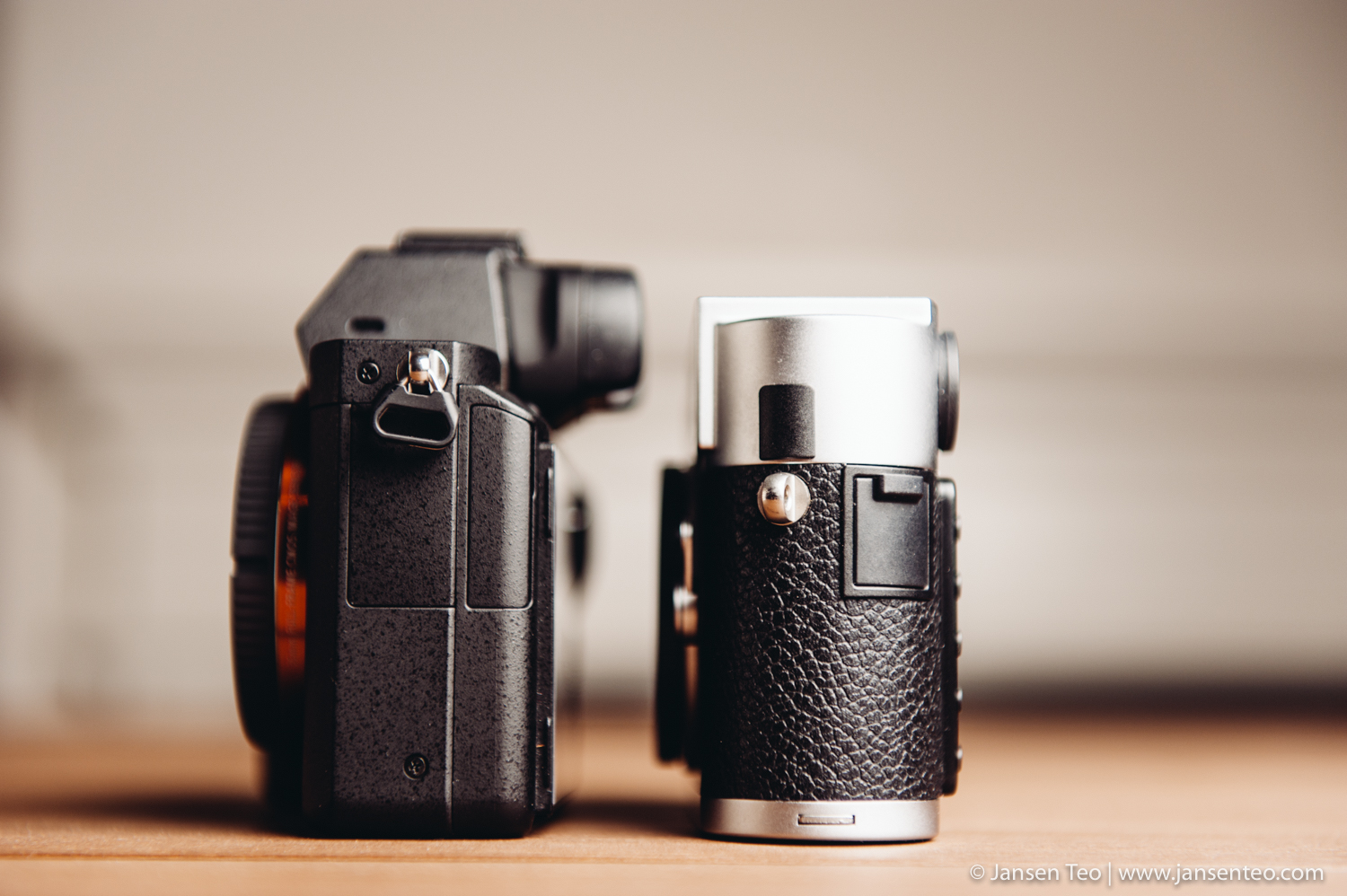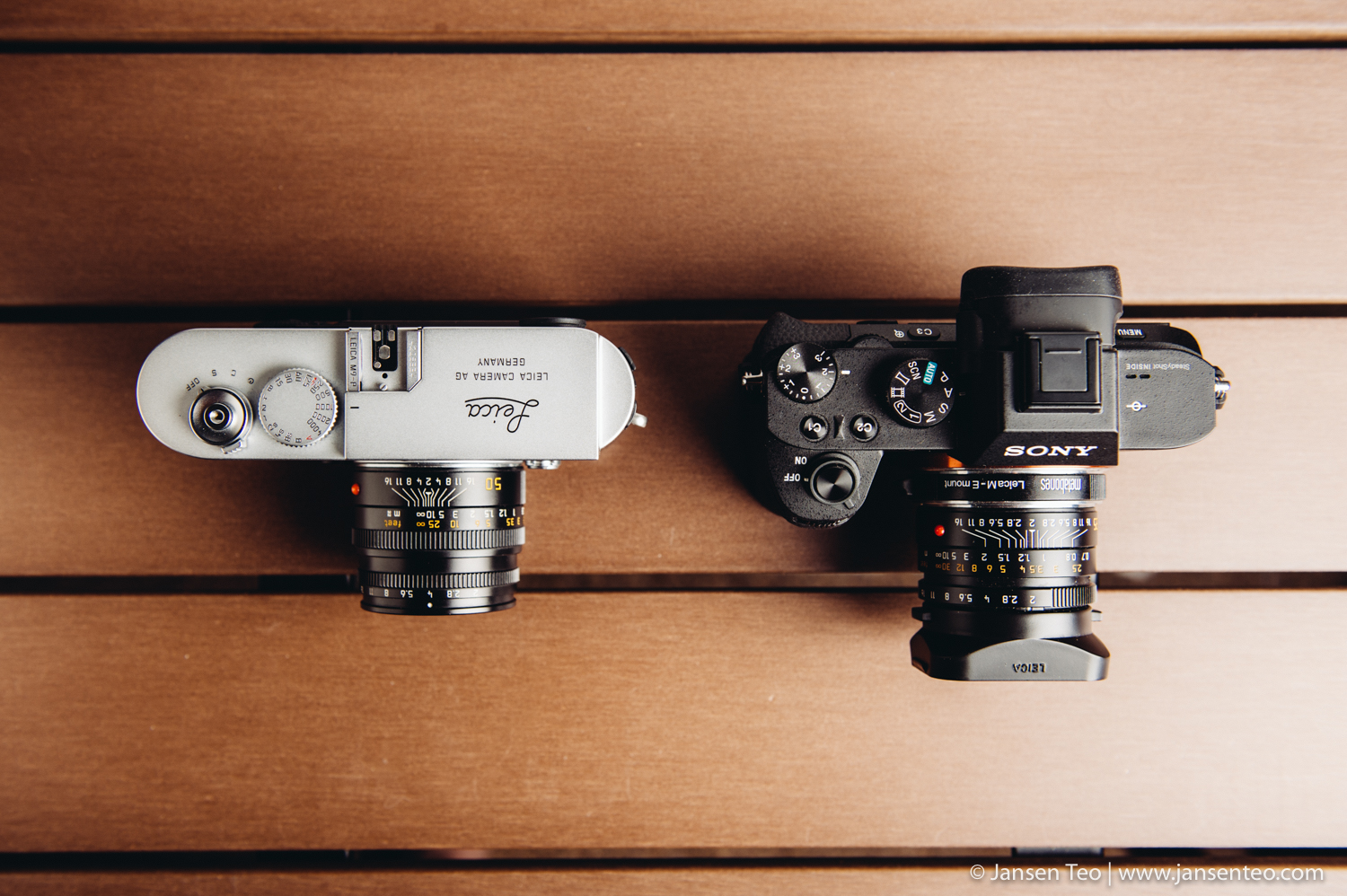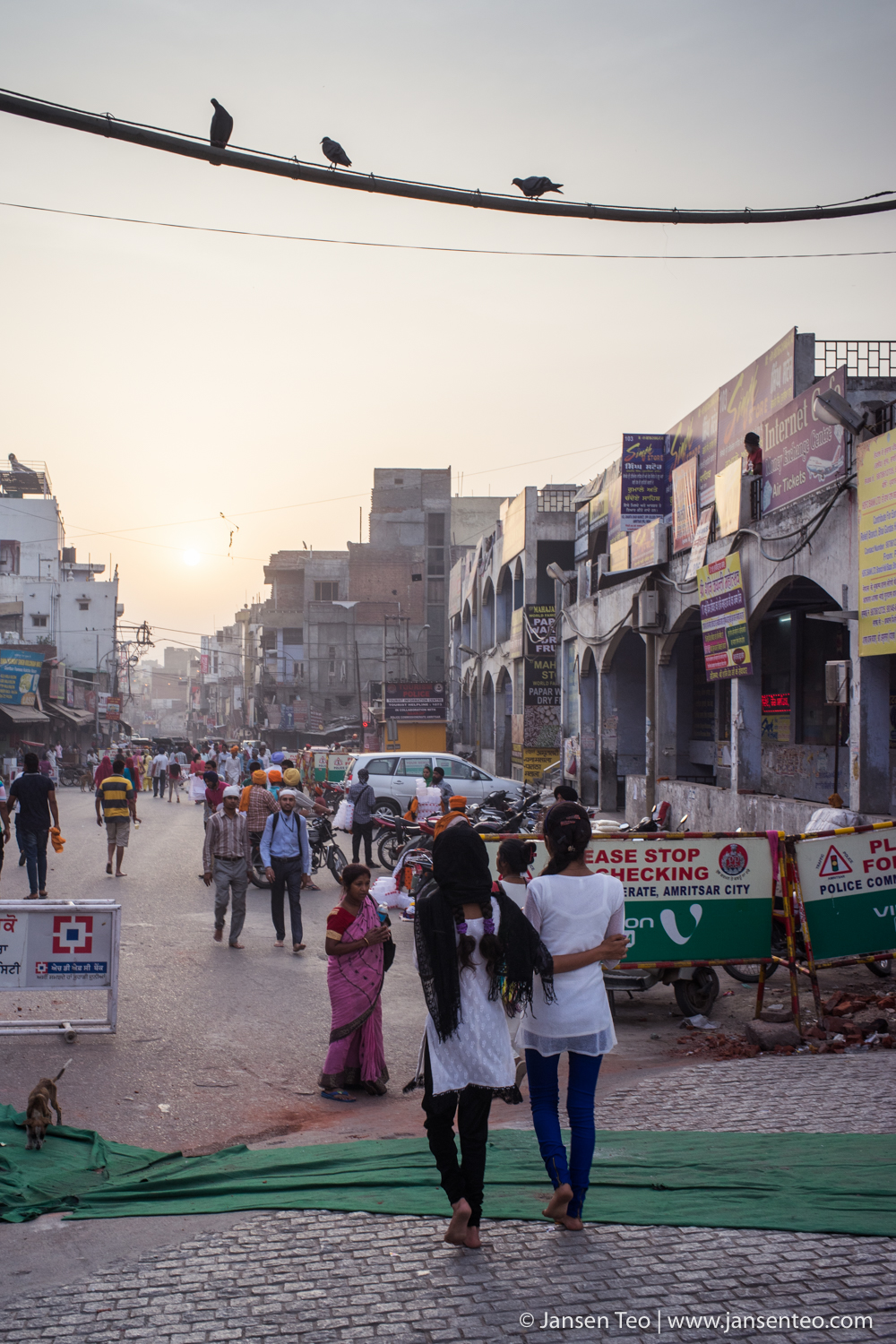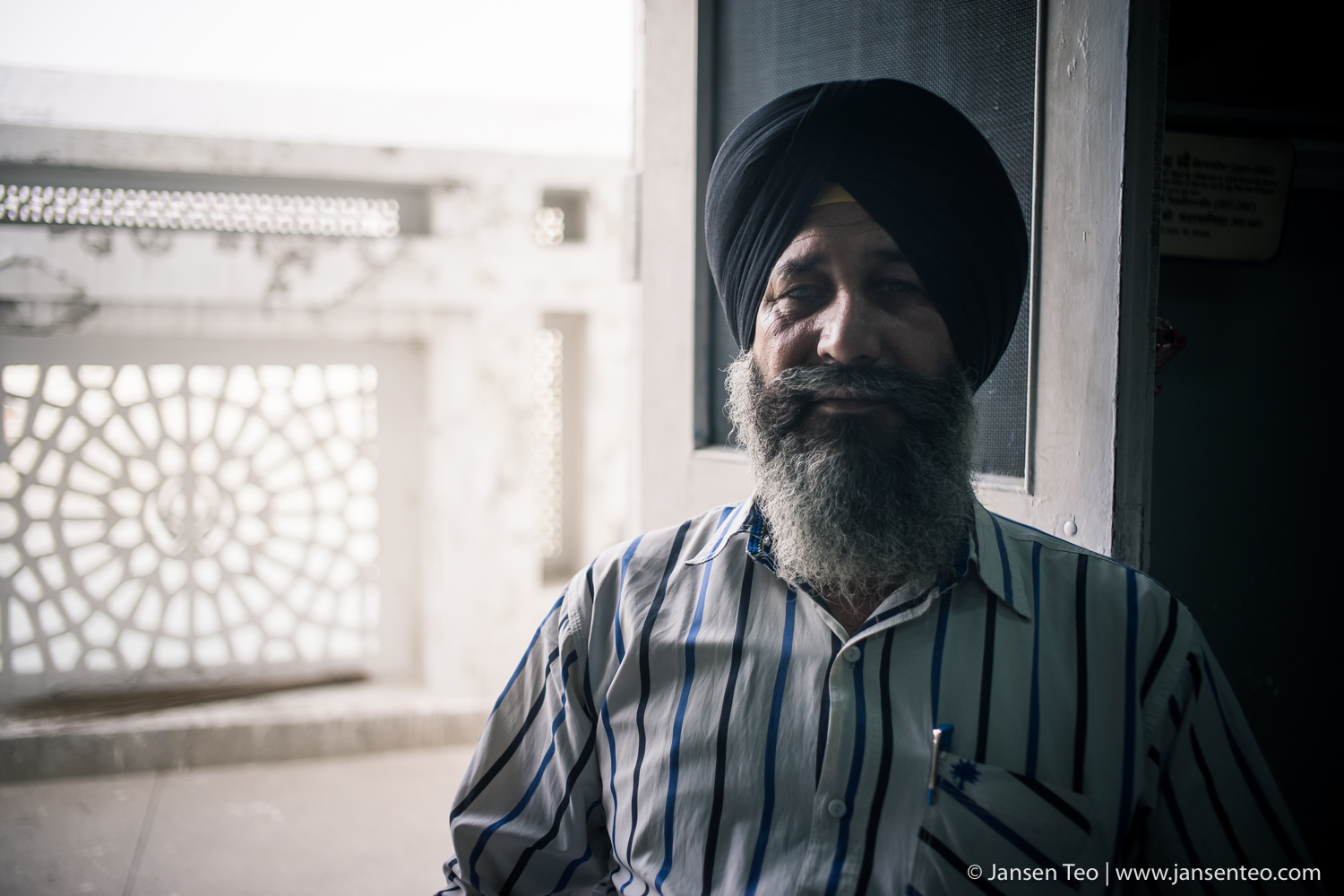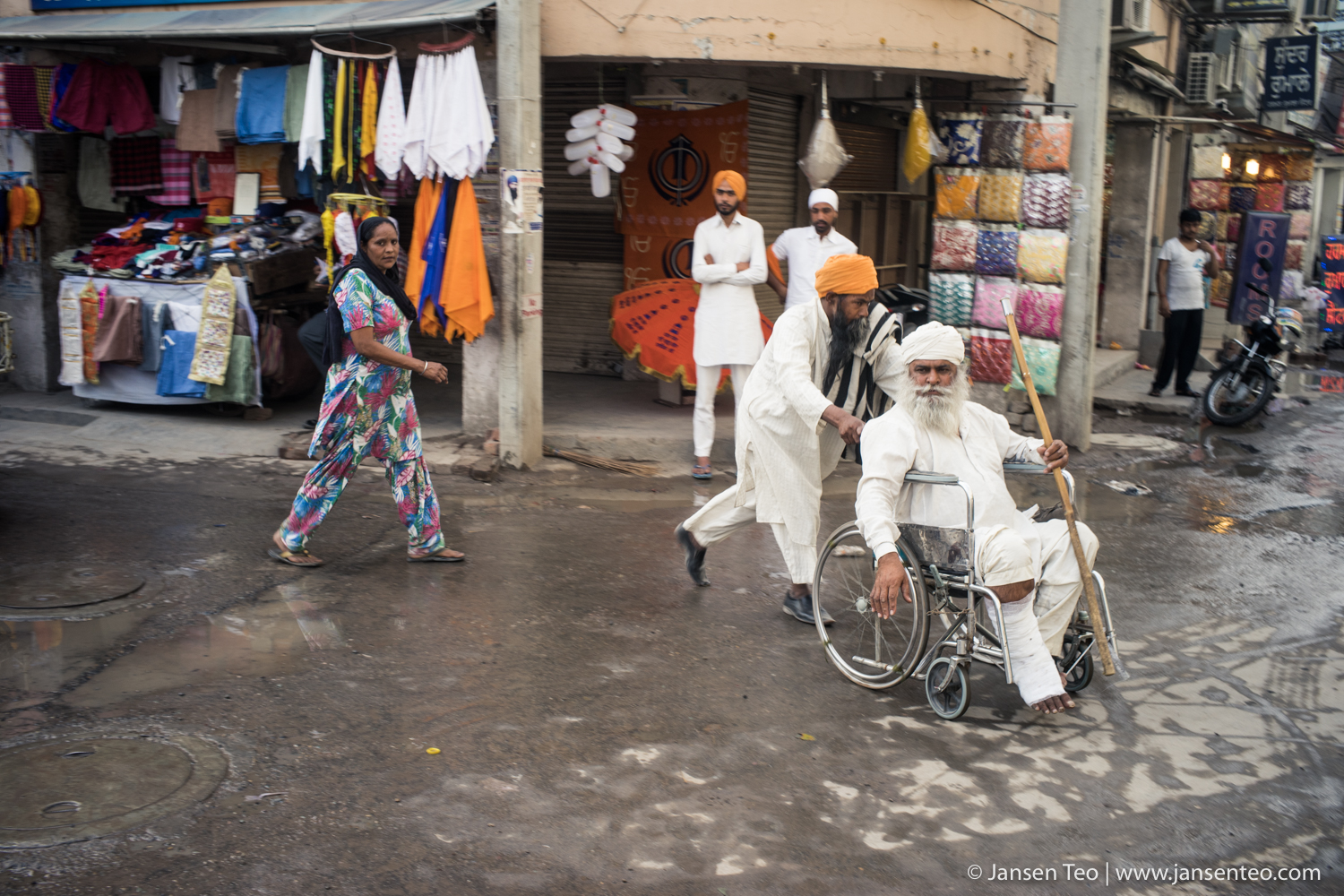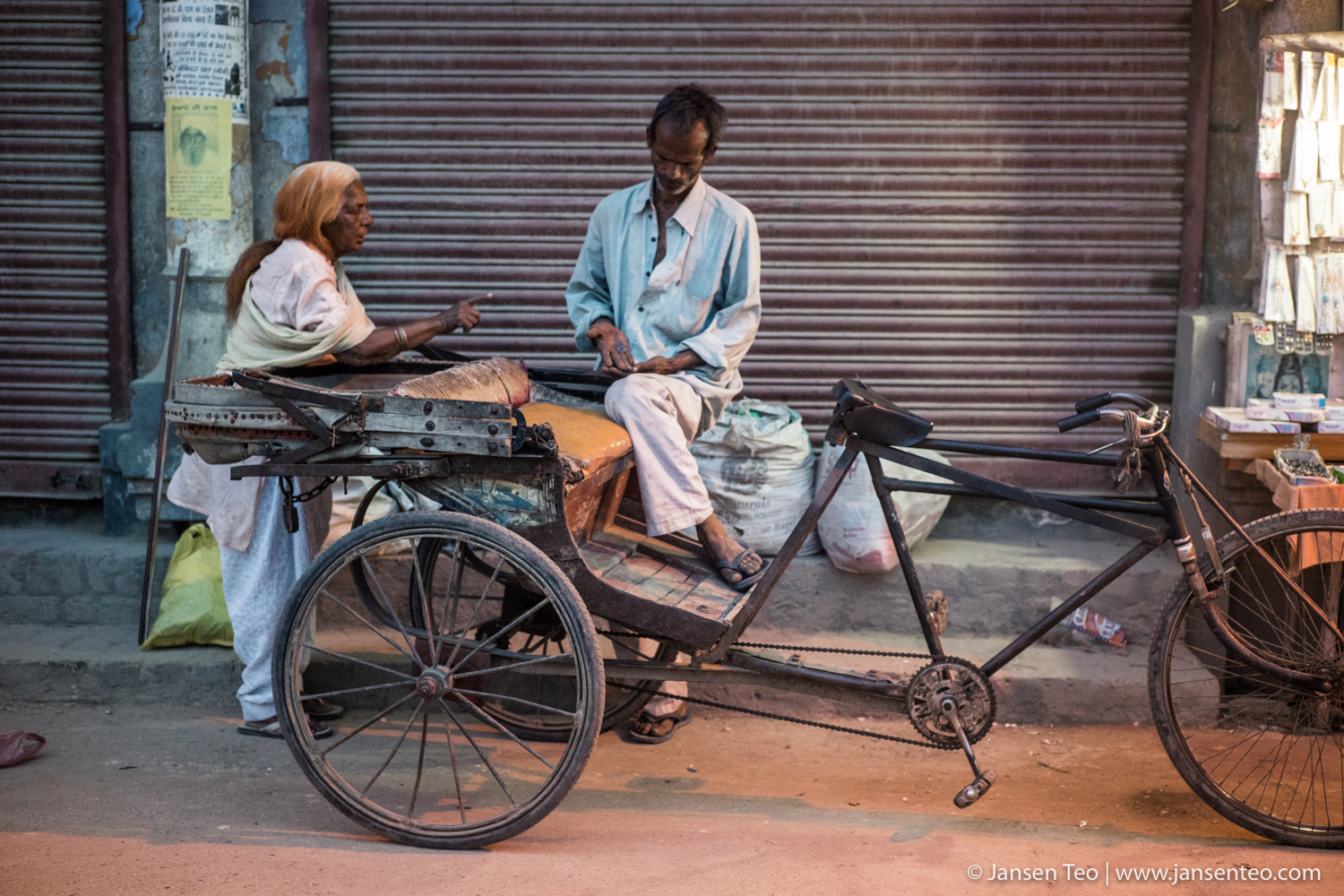My review is not meant to cover every single details regarding technicality. There are already a number of good reviews that covers that area. This review is simply based on my findings and opinion, enjoy.
Gear:
- Sony A7ii Body
- Leica M Summicron 50mm F2 Type 5 (1994-2013)
- Leica M Summicron 35mm ASPH F2 Type 4 (1996-Current)
- Metabones Leica M to Sony E mount Adapter
Pros:
- Size and Weight
- Discrete (vs. DSLR)
- Build and Ergonomics - better grip
- Legacy Lens compatibility with adapter (Leica M Mount in this case)
- No back or front focus issue with lenses in Manual Focus
- Accurate manual focus
- Image Stabilization (named Sony Steady Shot)
- 24 MP Full Frame with relatively good high iso files vs Leica M9
- High resolution LCD screen
- Decent start up time
Cons:
- Battery life around 350ish shot
- No standalone charger included (Seriously…)
- 11+7bit Raw File vs true 14-bit Raw like the Nikon D750
- EFV (Electronic Viewfinder) a little laggy for panning and general movement lag.
- EFV Resolution
- EFV not great for shooters with glasses (sun glare between eye and glasses)
- Focus peaking too distracting in EVF to see image that are covered by red/white/yellow focus peaking markings due to EVF resolution.
- Focus peaking mostly accurate only if aperture smaller than F4
Sony A7ii Body
For a last minute trip to Thailand and India, I considered taking my trusty old Nikon D700. Few days prior to the trip itself I stumbled upon a backpacking article related to traveling light with minimal gear that gave me the epiphany to carry a smaller camera instead. The Leica M9 ISO limitation is what makes me hesitant at first, since I only comfortably use it in good light up to iso 1250. Besides my D700 with 50 1.4G has been my low light to go kit for awhile now.
Looking for an ideal balance between size, weight, and imaging capabilities I stumbled upon a review of the Sony A7 series. I have contemplated of testing it out in the past with the possibilities of it being used as my daily camera. A DSLR is too cumbersome, and the Leica M9 is not that good at higher iso (although sometimes still quite usable). After reading various review of the Sony A7 series and handling the unit itself in the Sony store I wasn’t sold on the camera. It is ergonomically quirky, material feels cheap, poor native lens, slow autofocus, and the electronic viewfinder just doesn’t cut it for me. Overall it seems like the product has not reach its final stage, feels more like a beta test camera to me.
Having used a range of mirrorless in the past such as Fuji X100, Fuji X100S, Lumix GF-1, Sony NEX-7 and 5 series none of them really stuck to me except the Lumix GF-1 with the pancake 20mm 1.8. I ended up giving it to my sibling at the time. I got the Leica M9 over the Fuji X100. When the X100S came out, I did buy it and ended up returning it as I feel it didn't have significant improvement to warrant the purchase, and my copy had a faulty LCD screen near the bottom right area. The Sony NEX menus really bugs me, and to me is not user friendly at all. The 2 knurled knob was too easy to turn and would be turned accidentally while wearing it or with slight contact.
Sony A7ii + Leica M Summicron 35mm F2 and Summicron 50mm F2
Reading numerous review of the Sony A7ii and looking at spec and picture comparison I decided to pull trigger. It seems to me at the time that, the Sony A7ii is finally a mature version of the series. At the time of the purchase (late April 2015) there was a 200$ rebate bringing the price down to 1500$ for the A7 mark ii and the Sony A7 was down to 1000$. The intention is to utilize my Leica M lenses that I already have. I decided to get the Metabones adapter for leica M and Nikon F mount for the A7ii.
After packing my carry-on backpack with the D700 combo vs my Sony A7ii with Leica M Lens combo I decided to bring only the Sony A7ii (due to weight and size). I brought along the manual and fiddled with the settings and test it out to familiarize myself with the system. Using the camera extensively for 10 days straight here are my findings.
Build Quality and Ergonomics
I think that Sony has finally hit the nail on the build quality and ergonomics of the Sony A7ii series. The body consist of magnesium alloy and the grip size has been increased which allows my hand to wrap nicely and grip it with confidence. Outer texture has also been improved from the glossy surface used in other series of the A7. Shutter button has been relocated forward on the grip instead of the awkward positioning of the previous A7 series. The SD card door is the only area which does not live up to the rest of the body.
Exposure compensation and Drive mode dial have a nice firm pressure to it that make it less likely to accidentally get turned without the user noticing it.
Sony A7ii Overall Profile
Manual focus and Focus peaking
Took me awhile to figure out both functions with custom programming no the custom buttons layout. Manual focus magnification is as accurate as your eyes can see, while focus peaking is a little iffy above bigger aperture than F4. Through out my trip I tend to miss the focus if I solely rely on focus peaking, although not an issue from F5.6 and smaller because I’m used to reading the distance and depth of field scale from my Leica lens.
Some websites recommends the setting of increasing sharpness in creative style menu while shooting raw to ensure a faster and easier focus peaking target (as it detects edges to determine if the subject is in focus or not). Some recommend reducing sharpness in creative style menu to improve the accuracy of focus peaking since the sharp image will only show from subjects being in perfect focus. The main issue with focus peaking is that when you view it through the evf, the focus peaking markings overlay the focus area which means that you can’t see the detail covered by the markings. Therefore the scene you see is partially covered due to the distraction of red/white/yellow focus peaking markings which can be overwhelming at times, especially using the EVF in bright sunlight. Not as much of an issue on the LCD because the resolution is high enough that it retains more of the details without it being washed out by the focus peaking marking.
Magnified Focus area requires 2 clicks on the programmed button to magnify the image to ensure as accurate of a focus your eyes can handle. It is very nice, as in the focus accuracy would be close to perfect especially with fast lens such as the Summicron F2. Once you nail the focus you can press the shutter button halfway and it will throw you back to a non-magnified view to recompose and take the shot.
The trade off is when you magnify, you can’t really see your overall composition therefore not being aware of what is going on in your frame while you nail the focus. This is not a problem with the Leica M9, but the manual focus would not be as accurate since there is no way you can magnify your focus on the Leica M9, it is heavily dependent on your eye.
EFV (Electronic Viewfinder) and LCD
EVF works in general for still subjects. The beauty of EVF and LCD is that you can see the effect of your exposure adjustment right away which gives you an idea of what your image will look like (live view effects on). This effect can be turned off via settings too. The problem in general with the EVF is while panning the image blurs and lags behind, which is really annoying. The blur was so bad that I would have to use zone focusing to and low aperture get proper focus. Furthermore, as I wear glasses, the EVF is quite useless in bright sunlight unless I’m wearing a hat. The problem lies not so much with the evf, but the gap between my glasses and my eye which allows the sunlight to enter my eyes because it cant be flush with my viewfinder. This occasionally happens with my Nikon D700, although not as apparent and as frequent. Even in bright sunlight, the viewfinder is quite usable since the light actually makes the viewfinder brighter and there is no lag at all for optical viewfinder. This is where I really much prefer and miss the optical viewfinder. One company that blends the best of both worlds is Fuji with their hybrid viewfinder on their latest Fuji X100T. The hybrid viewfinder provide the no lag from the optical viewfinder while providing very useful information that you need electronically all in one wonderful viewfinder. When you tilt the camera to portrait mode, all the text in the viewfinder also rotates which is really neat and well thought out. Take a note Sony!
The LCD on the Sony A7ii is good enough to use in even the brightest sun during my trip to India and Thailand, the brightness was adequate provided you change the setting to sunny weather. Not getting into the nitty gritty technical side of things, I believe the LCD is really good to use and it also tilts. For hip shooting and angled stuff, this is a joy to shoot with. In low to medium light environment I find the LCD enough to obtain accurate focus with focus magnification. However on bright sunny days, even with sunny weather settings (max brightness on LCD) I don't feel confident that the focus can be nailed accurately using just the LCD. I tend to switch to EVF when I must nail the focus for a big aperture like F2-F2.8, albeit having to use my other hand to shade the gap between my eye to the camera since I wear glasses.
Sony A7ii and Leica M9 / M9-P Overview
Battery Life
Battery life for the Sony A7ii is rated around 350 shots per battery, which is quite accurate based on my own experience. This is annoying especially coming from shooting a DSLR with battery that can last 1000+ shots. Of course this is probably due to the all-time active live view that the battery needs to drive and not to mention the IBIS (In Body Image Stabilization a.k.a Steady Shot).
Carrying a spare battery is no big deal, but the problem is Sony didn’t include a standalone charger with the camera. In other words you need to plug in your camera to USB port with a relatively short USB cable they provided. Very disappointing indeed due to the lack of charger, but battery life is not a big deal for me despite wishing it has double the capacity.
The good thing about it is that it uses the same battery as the Sony NEX series and possibly other Sony mirrorless camera. I managed to borrow my sister’s NEX-7 battery and charger to bring with me on the trip.
IBIS (In Body Image Stabilization) / Stead Shot
I find the IBIS to work out pretty well, and is consistent to the findings by other reviewers. Overall the IBIS would give you an extra 2-3 stop at its best. There is also a menu to customize the focal length for IBIS which is useful for people using a third party lens like me. I turned it on most of the time and turned it off only when I need to conserve my battery.
Sony A7ii + Leica Summicron 50 F2 - Straight out of camera raw converted to jpeg with Adobe Lightroom 6. ISO 100 1/1500s f2 (Click to enlarge)
14-Bit vs 11+7 bit Raw file
I was actually quite disappointed when I found out that the A7ii, like the other A7 series does not provide a true 14-bit Raw file which results in posterization in certain conditions. All the technical details regarding this issues are well documented and reviewed by others so I will not get into it here. From my trip, I haven’t seen much issue with posterization from my images. This is quite the deal breaker, because originally I wanted to use this or the A7s for astrophotography.
Image Quality
One of the best features of the Sony A7ii and the A7 series is that ability to use Leica M lens via an adapter. The combo of the 24MP CMOS sensor and the Leica Summicron lens is just beautiful. I would never be able to get some of the shots with my Leica M9 due to the iso limitation. Some people would argue that the Leica M9’s CCD sensor still trumps the Sony sensor, however I believe it is quite subjective and a matter of preference. For me being able to shoot comfortably in low light situation is definitely an advantage over the Leica M9. All the photos on this trip is shot with either a Leica M 35/50mm Summicron. And personally, I am not as concerned about pure sensor image quality vs. the content of the photograph itself. Of course good sensor is a really nice added bonus, but for that I would probably get the Nikon D810 in the future.
Nikon D810 vs. Sony A7ii size comparison
Intangibles
One of the things that holds true for this camera is its disarming charm due to its size. Here is where being a tourist or outsider actually comes in handy. From my experience shooting with smaller camera that doesn’t look “pro” to the general crowd tends to be more welcomed when shooting portraits of strangers. I am sure that some of the images can be achieved easily with a DSLR too, however the attention it attracts is often uncomfortable and people tend to be more wary of getting shot by a DSLR. I was able to carry this camera almost everywhere I go without it attracting too much attention, and with the other lens in the pocket of my pants.
The ability to use a third party lens with good to decent manual focus is an absolute gem in my book. I love the ability to use my Leica M lenses with this body and even Nikon lens if you use the adapter. I have not tested the autofocus effectiveness for third party lens like Nikon, but from my findings it tends to hunt a lot.
Sony A7ii vs. Leica M9-P side comparison
Areas that are better on the Sony A7ii vs. Leica M9
- Better to hold due to grip
- LCD quality
- Low light condition (Leica M9 highest ISO 2500 only, usable files about 1250-1600)
- In body Stabilization for 2-3 extra stop
- Focus Accuracy - Focus Magnification
- No need for calibration like the Leica M9 Rangefinder Mechanism
- Modern Features - WiFi, Remote Shutter Trigger from mobile via app
Top view comparison, Leica M9-P vs. Sony A7ii
Conclusion
As much as I’ve enjoyed shooting with the Sony A7ii, I feel that the camera is close but not quite there yet. Battery life, EVF, focus peaking and manual focus still have room for improvement albeit a pretty solid contender in the mirrorless market. Considering the price (1500$ after 200$ rebate) and my existing equipment, I will be returning the Sony A7ii and wait until I feel the system is complete and mature. Rumor has it, Sony have the A9 series planned down the pipeline and it would be interesting to see what they come up with.
Other reviewers rave about the Sony A7 series video capabilities, but my review does not take into account the video capabilities because of my limited experience with video. So others might take the video features as a big plus, while my review is only limited to it from a photographer’s stand point.
Overall this camera is definitely more than enough for some people’s criteria to use it as their main camera. Manual focus experience has a little too much layer to get to the magnification, which makes me prefer shooting the rangefinder for faster focus while being able to evaluate the scene. Other reviewers also said that autofocus is much faster, accurate and intelligent on the Sony A6000 series but not full frame.
Personally, I still feel that DSLR has properly matured and more refined vs the Sony A7ii, which feels to me still a little experimental. I applaud Sony for pushing the boundaries and providing full frame mirrorless camera at a relatively decent price. This is a good thing for the industry as it forces other manufacturers (cough.. cough.. nikon.. canon.. leica..) to re-evaluate where they stand and I think Sony will be the brand to watch closely, just like when Fuji X100 first hit the market with its big success despite its flaws. If I could only have one camera, I would still pick a DSLR from Canon or Nikon (prefer Nikon’s menu layout and ergonomics).
Images taken with the Sony A7ii + Leica Summicron Lenses (35, 50):



